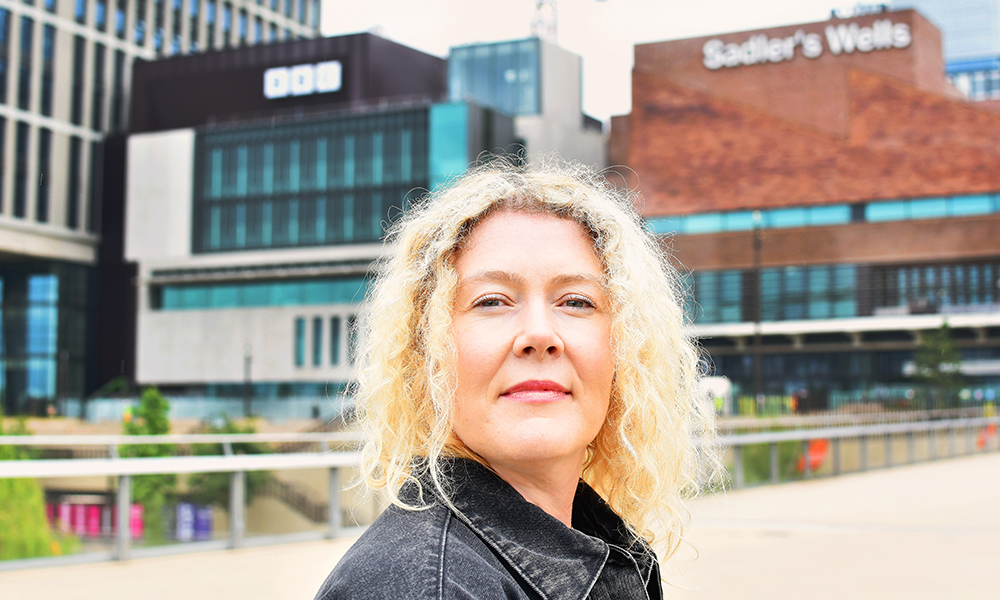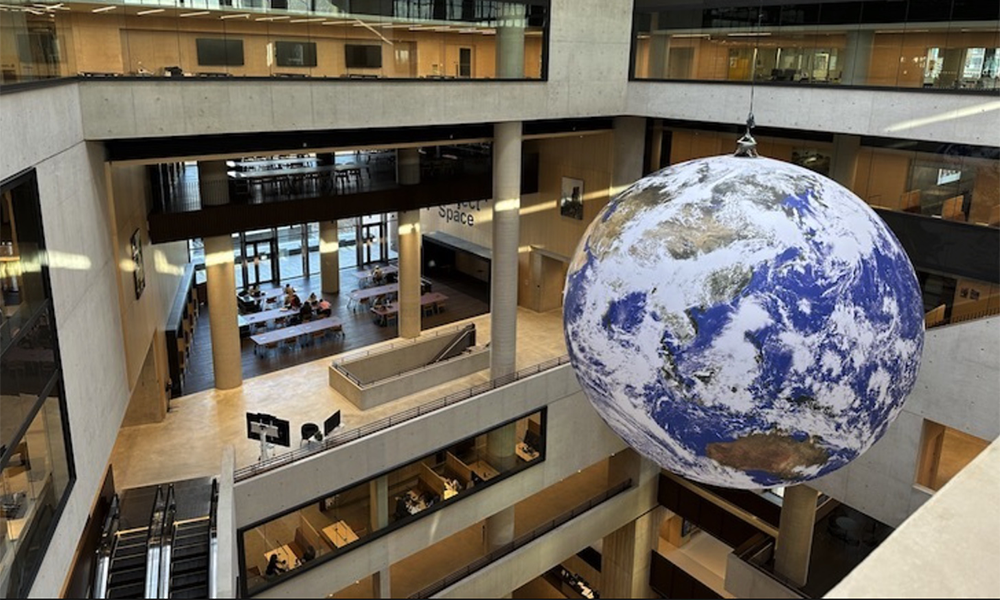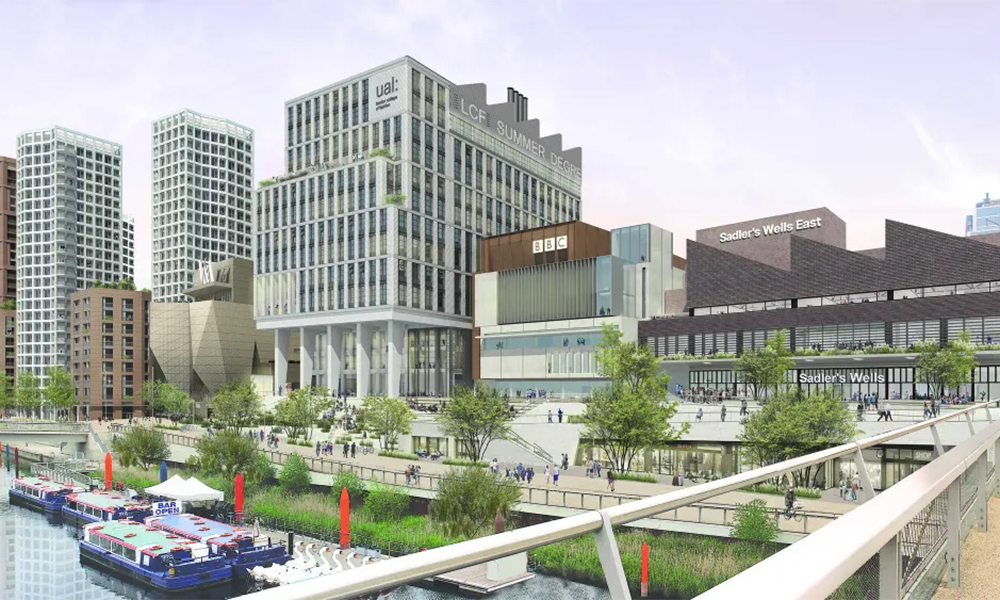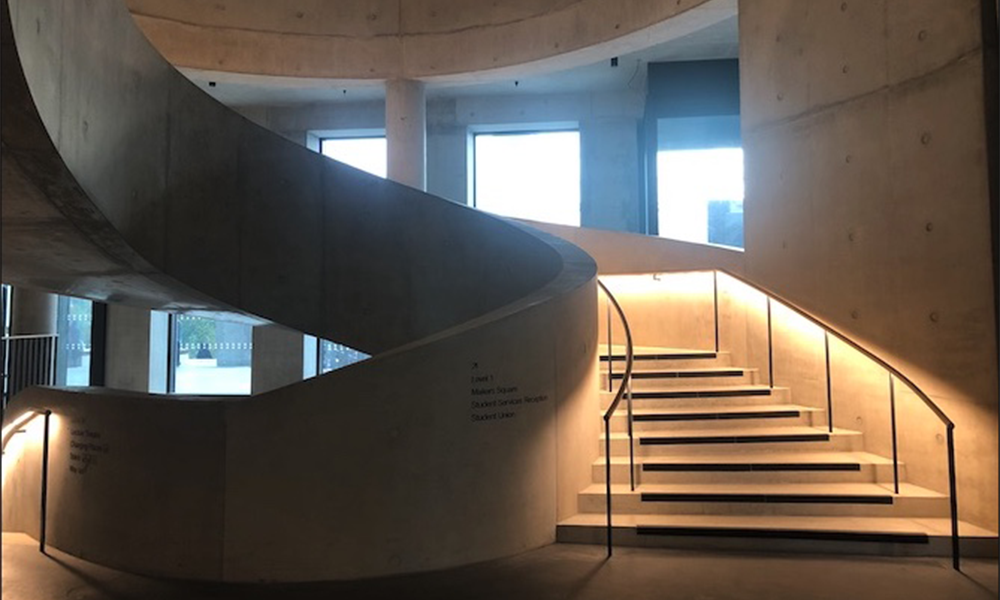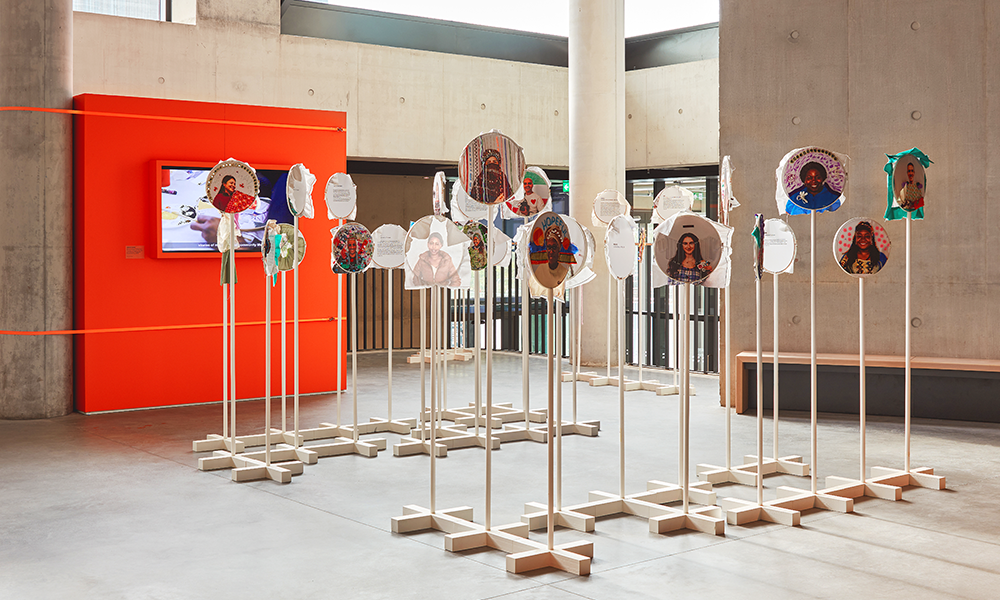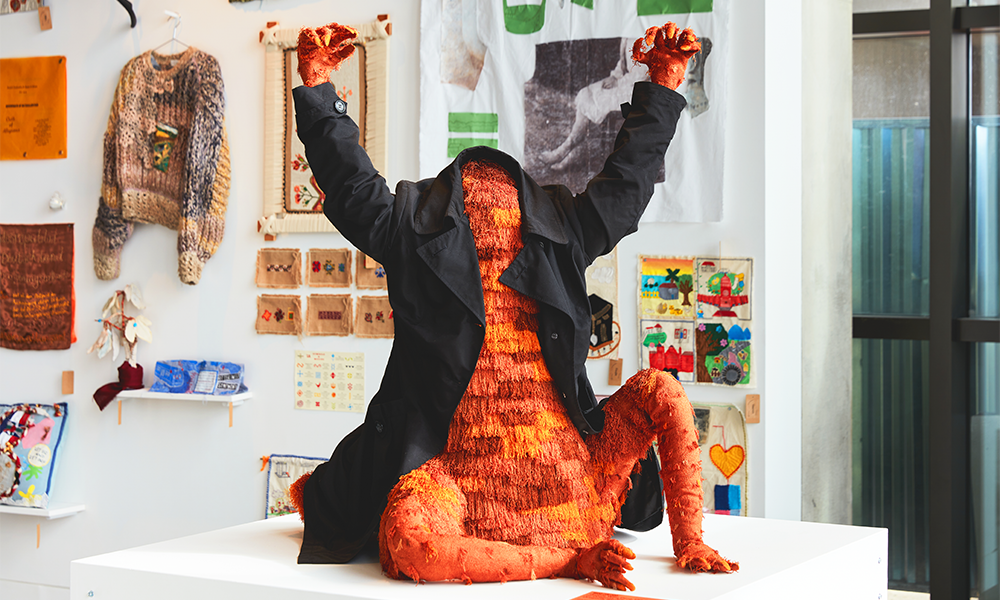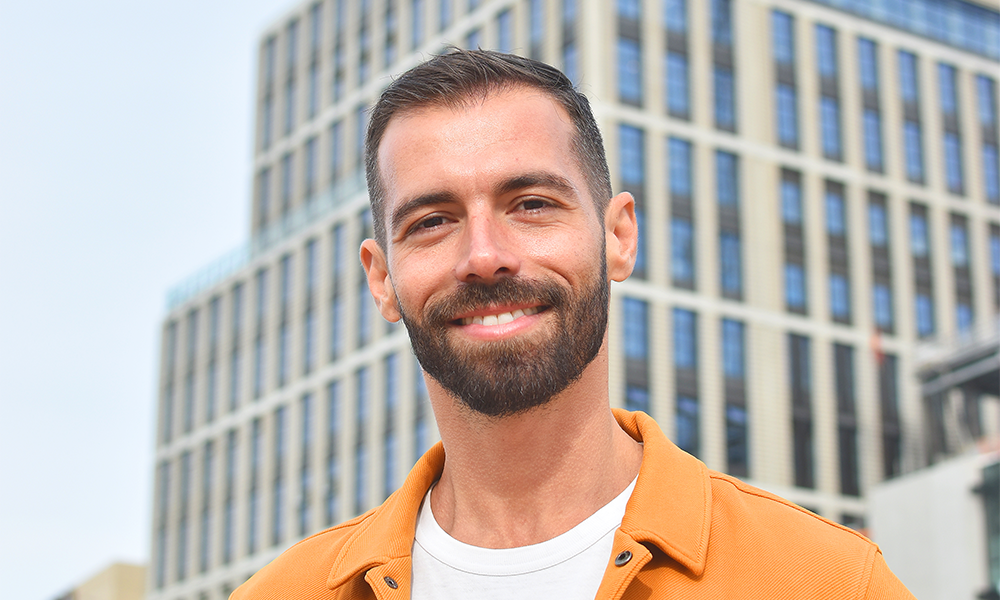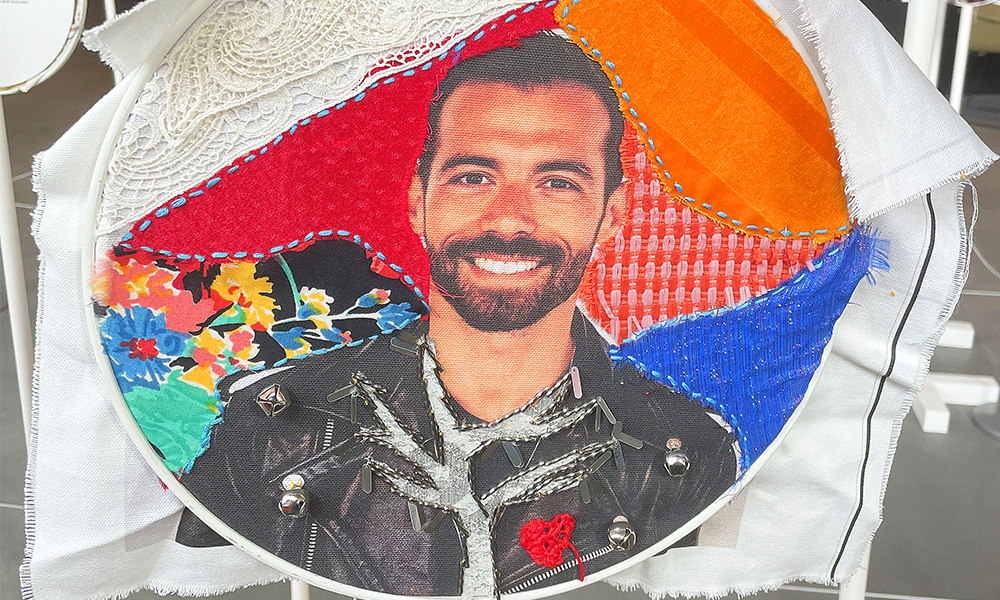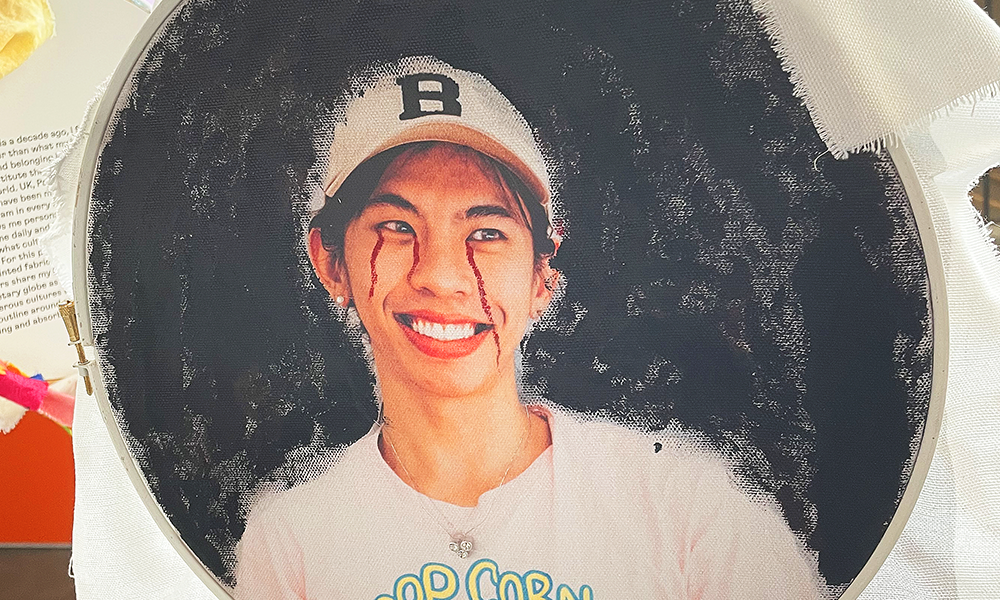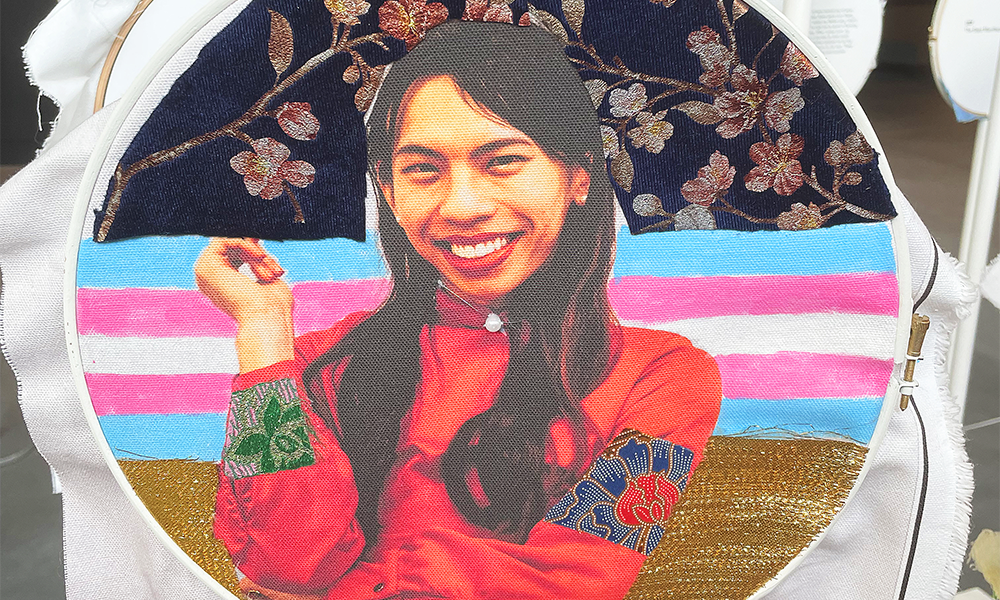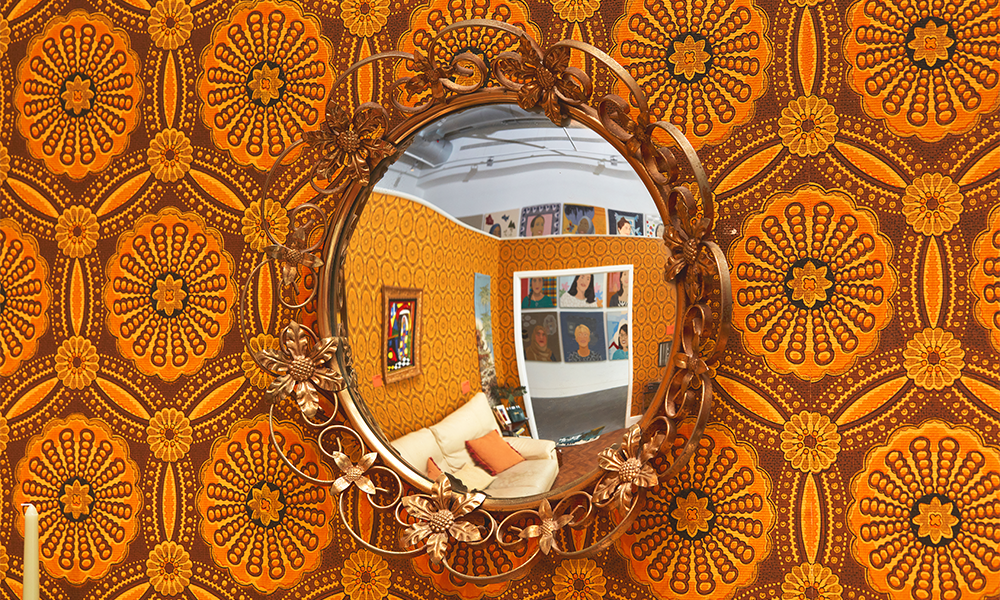Brand’s coming to 8 Harbord Square in Wood Wharf will care for, repair and create fashion in the neighbourhood

Subscribe to our free Wharf Whispers newsletter here
ADVERTISEMENT FEATURE
While Canary Wharf’s malls are replete with stores selling all kinds of fashion, only English Tailoring makes and sells garments in the neighbourhood.
Soon though the veteran tailoring business, which has spent the last 28 years clothing Wharfers from its base on South Colonnade, will be joined by a new arrival to the area.
As part of Canary Wharf Group and Tower Hamlets Council’s collaborative project to provide affordable space for local businesses, 8 Harbord Square in Wood Wharf is set to welcome Asya Ter-Hovakimyan’s two brands – Omnifix and Omniss.
The former offers repairs, alterations, tailoring and customisation, while the latter is the creative label she co-founded in 2016 with Francisco Zhou while the pair were studying at the London College Of Fashion.
Omniss became established at Poplar Works in east London in 2020 as a base of operations, while the genesis of Omnifix came shortly after the pandemic arrived when Asya spotted a gap in the market.
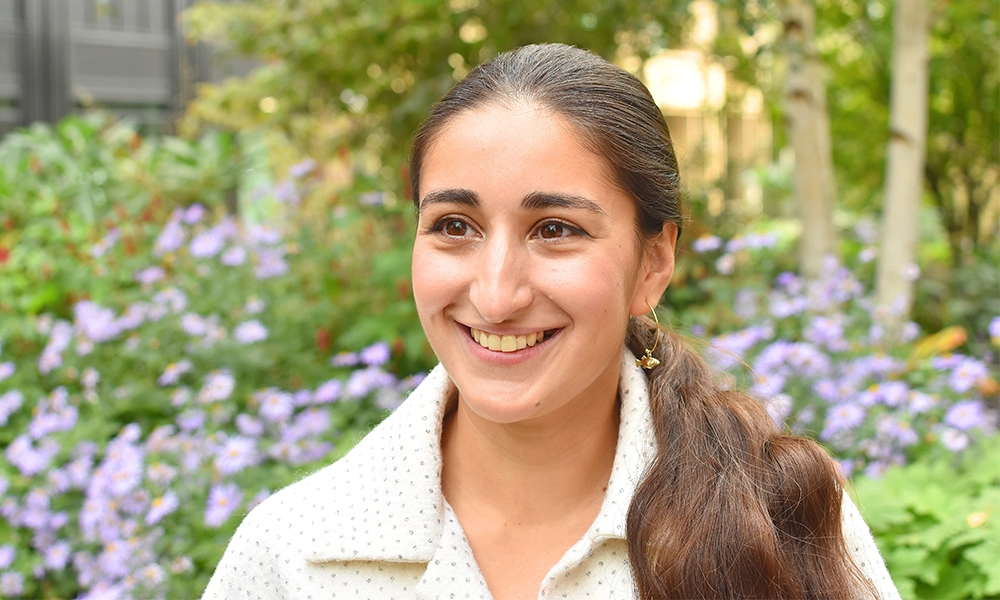
a high-end solution
She said: “In the UK, alterations and repairs to clothes are generally handled through dry cleaning businesses.
“In London you also have high-level seamstresses and tailors who do work making garments for fashion labels, but don’t tend to get involved with that sector.
“When lockdown happened, we had customers getting in touch with us for help with designer garments – repairs and alterations.
“I realised that, through my work with Omniss, I was in between these two groups and had all the resources to handle complex services like sympathetically re-sizing pieces as well as simpler tasks.
“Initially, this side of the business didn’t have its own name, but it grew so busy through word-of-mouth that I had to work out what to do with it.
“I founded Omnifix with the aim of treating fashion in a different way.
“I wanted customers to be able to bring pieces they loved to us to work on to bring new life to them.
“In December 2022 we’d moved to a bigger space in Hackney Wick at The Trampery and, by March, we were fully booked.
“We had to hire staff specifically to work on repairs and processing new orders and, by this time, we were getting business from all round the UK.
“I’d always seen us needing more space and I’m quite local to Canary Wharf.
“I know the type of people who are here and I think we have something to offer them.
“While we have an online presence, I believe it’s important that clothes exist in the physical world – people want to try things on and it’s important to be able to see them face-to-face.
“Customers can bring us garments where they know something is wrong and we’ll fix it – we’ll listen to them.
“It’s a bit like going to the doctor with your symptoms. We’re here to be empathetic.
“It’s about trust and there’s a sense of community around that as well.
“I always envisioned that we would have multiple hubs to drop off clothes and get advice, but they’ll also be a retail element at Wood Wharf, selling quality fashion in that neighbourhood.
“Some clothes for Omniss will also be made there – that’s important too, because people can be disconnected from how their clothes are manufactured.
“If what someone is wearing takes special machinery and many hours of making to create but they’re only paying £10, then there’s a problem with that model.”
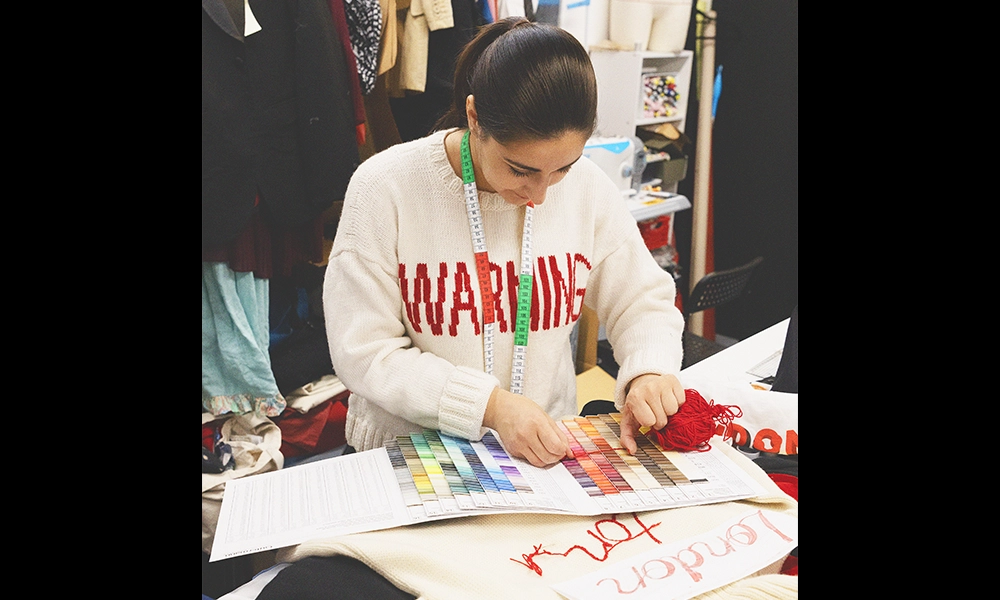
creating Omniss
Asya has been immersed in fashion from a young age, first learning embroidery in her native Armenia at her mother’s instigation before starting to make clothes aged 10.
She said: “She saw I really loved doing it, but she didn’t really do it herself – she had a conviction that everybody should know how to sew on a button.
“As a girl I learnt about the best fashion schools in the world from her magazines and they were all in the UK. I made it my dream to study in one of those places.
“It was quite a journey to put together a portfolio and apply, because I didn’t know about the system here.
“I did lots of drawings back home and then I got an offer from Central Saint Martins to study a foundation year in art and design.”
From that base, she won a place on the Fashion Design Technology: Womenswear course at the London College Of Fashion, where she met Francisco and started Omniss.
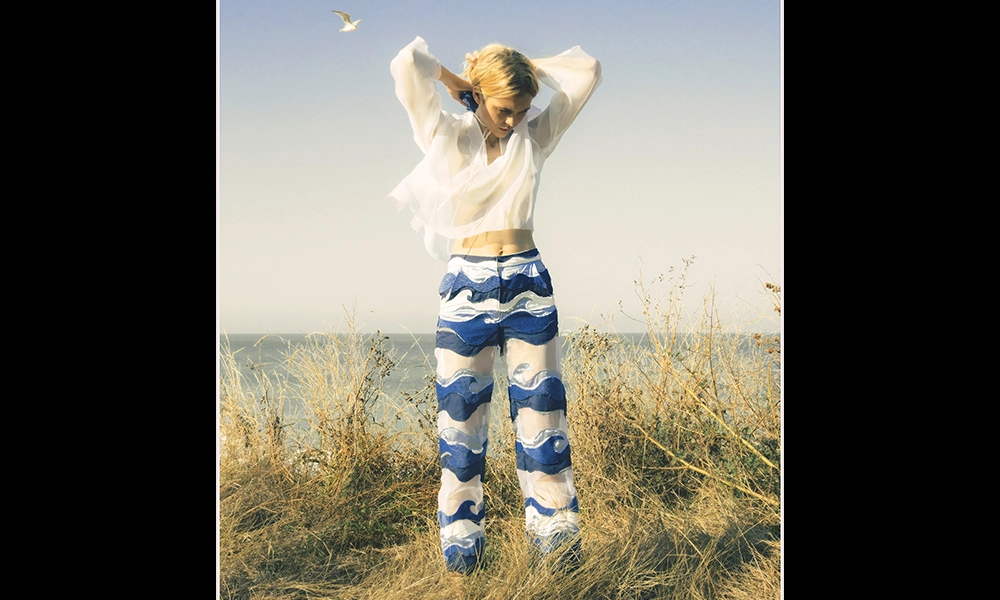
a foundation in technique
“It was a very technical degree,” said Asya.
“At first I was a bit upset because I was a lot more into the product and I wanted to do more artistic stuff.
“But I came to the conclusion that, if you don’t have the practical skills to bring your ideas to life, it might be easy for someone else to tell you they are impractical.
“If you know how to do it, it’s easier for you to get pieces made the way that you imagined.
“After I met Francisco, we started doing catwalk shows in west London venues such as Mayfair members clubs.
“We were just two students who barely knew anything – finding people to model for us in the tall jeans section of Topshop on Oxford Street.
“Some were tourists who were excited to be involved with fashion students – some even ended up buying our clothes.
“That’s when we realised that, if people liked what we were doing, we should make it into a proper brand and Omniss was born.
“We create collections, taking inspiration from what’s being discussed and what’s going on in the world around us.
“In 2019 it was about how AI would take over the job market – we imagined Omniss as a robot factory.
“Then there was a collection about the sea, when climate change was being neglected.
“One thing I’m very passionate about is making something sustainable, while ticking all the other boxes that fashion is supposed to be.
“Fashion should be empowering and make you feel good. You also need to like it aesthetically.
“Fashion needs to be organic and ethically made by people who are paid fairly. These are the basics.
“The trick is still to make it desirable – that sustainability isn’t the main reason why someone buys something.
“We always try to produce things that are really wearable.
“Running businesses is definitely a lot more hard work than I imagined, but we really care about every product and customer.
“When we get a five-star review we do a little happy dance.”
Omnifix and Omniss will join an ever-growing collection of new arrivals to Wood Wharf including The Flower Club, Wayne Hairdresser Salon, Cafe Seek, Ong Lai Kopitaim, The Island, Awe London, Signorelli and Pawsome Pet Grooming And Spa.
Several more businesses are set to open soon including Supershakes, The Lockdown Room, Nora and Mama Li.
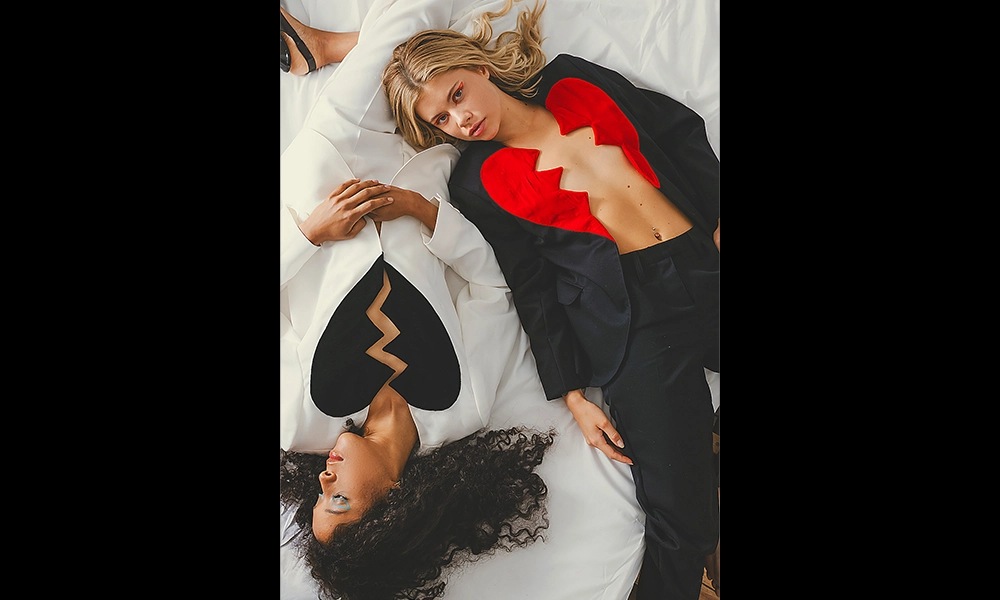
key details: Omnifix and Omniss
Omnifix and Omniss are set to open on the ground floor of Wood Wharf’s 8 Harbord Square in the coming weeks.
Details of the former’s services can be found here
Details of the latter’s collections can be found here
Read more: Amazing Grace set to open second location in Canary Wharf




